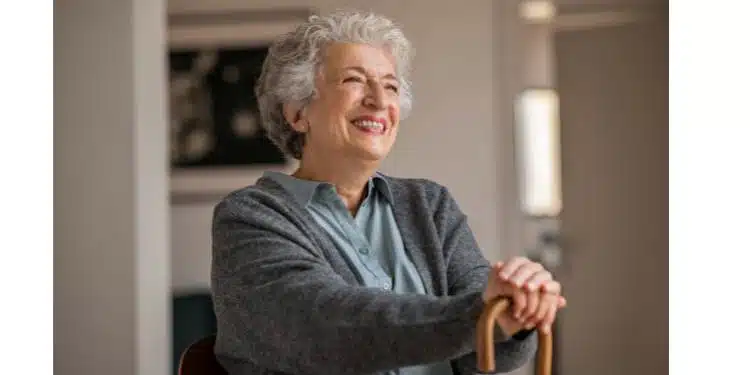I have moved! Moving is perhaps the most dreaded experience in the life of an older adult who has been long situated in one comfortable place. But it was time for me. Moving to a new residence for seniors desiring independent living without all the many responsibilities that come with home ownership seemed my logical next step in life.
Not that moving is easy. It isn’t at any age, but as a long-widowed older woman with collections and accumulations of many kinds that grew over the 40 years since my last move, this one posed special challenges of its own.

Downsizing Checklist for Seniors
I found sorting through a lifetime of belongings to be an enormous task. Too big a job to do on my own. I recommend if you are moving that you consider asking a friend or family member or hiring a professional, to help. Here is a comprehensive checklist to help guide you through the process. Keep in mind that downsizing is unique to each individual and involves thoughtful consideration of the items that are essential, meaningful, or no longer needed for your specific situation.
Essential Items:
- Clothing: Bring a sufficient supply of clothing for different seasons. It’s important to consider the storage space available in the new residence.
- Personal Care Items: Bring necessary toiletries and personal care items. Consider space for medical supplies and medications.
Sentimental and Important Items:
- Photos and Keepsakes: Bring a selection of cherished photos and keepsakes. Note: creating digital copies of photos saves space,
- Important Documents: Bring essential documents such as IDs, insurance policies, wills, and medical records. You can also digitize these items. Consider storing digital copies securely.
Furniture:
- Functional Pieces: Bring multi-functional furniture to maximize space. Think about the size and layout of the new living space in advance. Take measurements of the new space and your furniture.
- Sentimental Pieces: Take furniture with sentimental value if it fits the new space and is practical to bring.
Kitchen Items:
- Essentials: Pack essential kitchenware for daily use. You probably don’t need all your dishes, utensils, and cookware in your new home, and will likely have significantly less storage space.
- Favorite Items: Bring the favorite or sentimental kitchen items your space allows.
Electronics and Appliances:
- Necessary Electronics: Bring essential electronics such as a computer, phone, or television. Consider the availability of outlets in the new residence.
- Appliances: Take the necessary small appliances with you that fit in the new space. Check if common appliances are available in your new community, as, if this is the case, you may not need some of yours.
Books and Hobbies:
- Favorite Books: Bring a selection of favorite books. Consider reading on a Kindle or iPad to save space at your new home.
- Hobbies: You’ll want to bring essential items related to hobbies. Again, think about your space constraints and inquire about the availability of community resources for hobbies.
Seasonal Items:
- Clothing: Pack seasonal clothing and outerwear and think about how you will store them when off-season.
- Decorations: Bring a selection of seasonal decorations if desired.
Donate or Sell:
- Duplicate Items: Donate or sell duplicate items.
- Non-Essential Furniture: Consider donating or selling furniture that won’t fit in the new space.
Discard:
- Worn-Out Items: Get rid of items that are worn out or no longer functional.
- Expired Items: Dispose of medications and perishable items.
- Excessive Items: Toss items that are excessive or unnecessary.
Family Heirlooms:
- Discuss with Family: Discuss family heirlooms with family members. It’s nice to pass on items with sentimental value to the next generation if they want them.
Plan for Donations:
- Local Charities: Identify local charities willing to accept donations. Schedule pickups or drop-offs for larger items.
Professional Help:
- Estate Sale Services: Consider hiring estate sale services for valuable items. Get appraisals for high-value items.
Emotional Considerations:
- Take Your Time: Allow time for emotional considerations and make decisions at a comfortable pace.
I was grateful for the help of several good friends in “triaging” everything to assure that once decisions (sometimes very difficult ones!) were made, all clothing – furniture – kitchenware – etc. would find their way to the right places.
My “right-hand man” through everything was my stepson, who lives nearby. I “rewarded” his efforts – which were many, including hauling much from upstairs to down, plus trips transporting giveaways to many different places eager and grateful to have them — with the gift of my fully-owned condominium itself. And yes, I know how very fortunate I am to be able to do something like this!

My New Home
My new home is a large apartment on the fifth floor of an eight-story building, basically one very long room divided only in the ways I wanted it. The kitchen is at the north end, compact and complete; my office occupies the southwest corner; through its large windows, I have clear, unobstructed outside views while enjoying dry comfort as the sky darkens and our frequent Dallas rainclouds move in. For more “reality”: I also have a small balcony where I can sit to feel – as well as see – storms arrive. In between table and chairs, couch, TV — all the necessary “comforts of home.” In other areas: one bedroom, one bathroom with a shower and another without; plenty of space for bookcases plus wall-hugging furniture pieces providing open display shelves and lots of storage.
One special virtue for a non-cook like me: breakfast (order what you want!) in its own bistro, where fresh coffee and go-with cookies are available throughout the day. There is lunch – though I never seem to need that; and a caring crew serves dinner chosen from a menu of extensive and varied full-meal options every day. Perfect!
The Joys of Community Living
Part of the joy in this kind of community living is a varied program including both in-house and outside activities: classes…book reviews…religious services…group trips…etc.; just sign up and participate! And transportation is provided for such individual needs as doctor appointments and personal shopping trips. If you want to have your car here, there’s garage space for it; for storing “stuff” outside of your apartment, there’s a locked personal area just for you.
Part of the difference from the past is the “newness” of the experience itself. You will probably not be sitting alone in your housecoat all day – it is so easy to become involved, and involvement is welcomed at every level, from playing bridge or bingo to attending lectures and other presentations to viewing movies and enjoying musicians and other visiting entertainers. You’ll have schedules well in advance to alert you to all these activities, plus reminders of them. And – very important: housekeeping is provided for you regularly; you’ll have your washer and drier to use whenever you wish, but if you want to wait for someone else to change your bed linens, feel free to do so!
“If you are a people person, someone who finds joy in being with others, living somewhere where your own talents are recognized and can find full expression, a place where you can learn new things, make new friends, and carve out for yourself a new life full of your desires and options – Go for it!”
The Bottom Line – Go for It
I can sum up my experience by saying that this way of group living is not for hermits! But if you are a people person, someone who finds joy in being with others, living somewhere where your own talents are recognized and can find full expression, a place where you can learn new things, make new friends, and carve out for yourself a new life full of your own desires and options – Go for it! Check out the growing number of senior residences in areas that appeal to you; you may be very surprised at what you discover: perhaps an entirely new lifestyle in a very new home!
NOTE: Harriet chose The Legacy Midtown Park in Dallas, for this next phase of her life. Find out more about this community here!

FAQs About Moving into an Independent Living Community
Here are some commonly asked questions we hear from readers about moving into an independent living community.
How do I know if it’s time to consider independent living?
Consider independent living when daily tasks become challenging, maintaining a home is burdensome, or when social isolation is a concern. It’s also a viable option for those seeking a more social and maintenance-free lifestyle.
What are the signs that independent living may be appropriate?
Signs may include difficulty with housekeeping, yard maintenance, mobility challenges, loneliness, or the desire for a more socially engaging environment.
How do I discuss the idea of independent living with an older family member?
Approach the conversation with empathy and focus on the benefits, such as reduced responsibilities, increased social opportunities, and enhanced safety. Emphasize that it’s a positive lifestyle change, not a loss of independence.
What amenities do independent living communities typically offer?
Amenities vary but often include communal dining, fitness centers, social activities, transportation services, housekeeping, and maintenance. Some communities also have on-site medical services or partnerships.
How much does independent living cost?
Costs vary based on location, amenities, and the level of services provided. Monthly fees usually cover rent, utilities, meals, and some services. It’s essential to inquire about the fee structure and any potential additional costs.
What’s the difference between independent living and assisted living?
Independent living is designed for active, self-sufficient seniors, while assisted living is for those who may need help with daily activities. Independent-living residents typically do not require regular medical or personal care assistance.
Can I maintain my independence in an independent living community?
Absolutely. Independent living is designed to promote independence. Residents have their own living spaces and can engage in activities and socialize as much or as little as they desire.
What happens if my needs change over time?
Some independent living communities offer a continuum of care, allowing residents to transition to assisted living or other levels of care if needed without having to move to a different community.
Can I bring my pet to an independent living community?
Policies vary by community. Some independent living communities are pet-friendly, while others may have restrictions or specific guidelines.
About the Author: Harriet Gross

A proud native of Pittsburgh, PA, Harriet P. Gross began her journalism career in 1955 at a local paper. She moved to Chicago 2 years later where she worked as a full-time journalist until moving to Dallas in 1980. Here, Harriet began freelancing, doing special projects such as the text for Dallas Section, National Council of Women’s soon-to-be-published history book in addition to writing for a variety of publications.
Today, Harriet’s “In My Mind’s I” column runs weekly in the Texas Jewish Post. She has won writing awards from the Press Club of Dallas, American Jewish Press Association, National Federation of Press Women, Illinois Woman’s Press Association, and Press Women of Texas, and has been listed in five Who’s Who publications. In her community, Harriet currently is a book reviewer, discussion leader, and program presenter for clubs, senior living facilities, and Jewish institutions including the JCC’s Senior Program.











Harriet, glad to see you have made the transition to your new living accommodations with grace and are enjoying it! Dennis Guten
Thank you, Dennis!